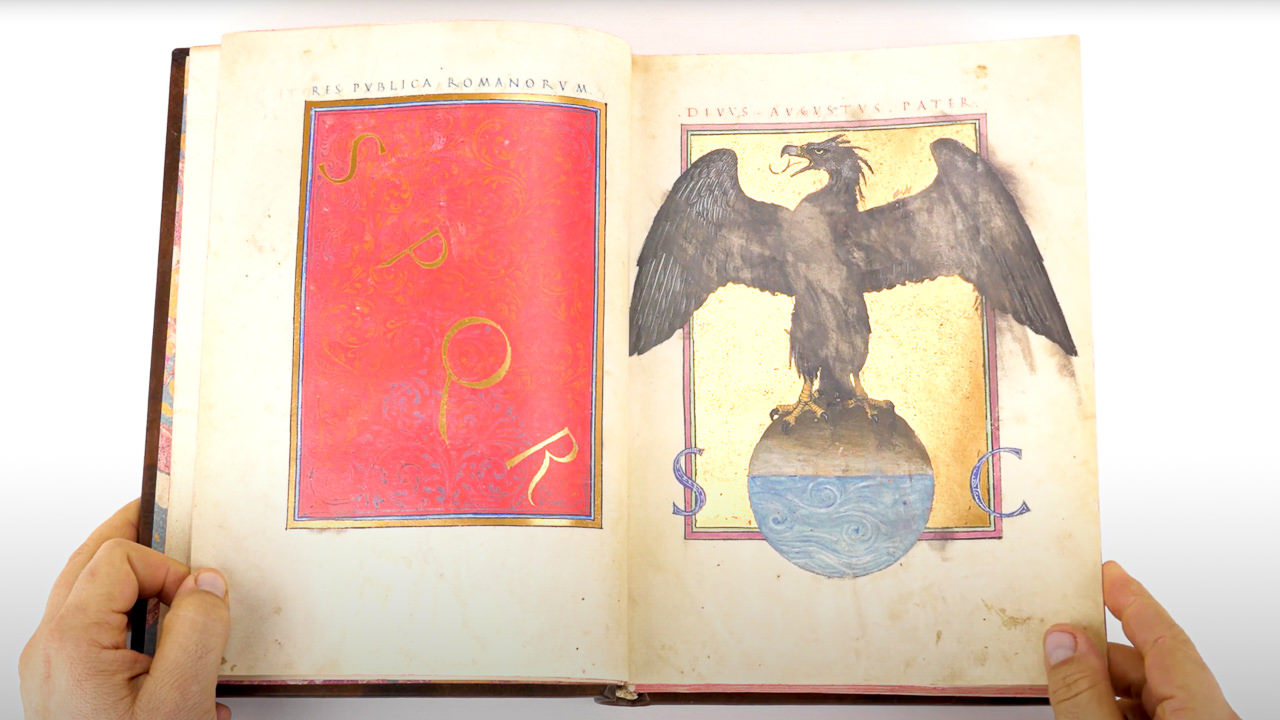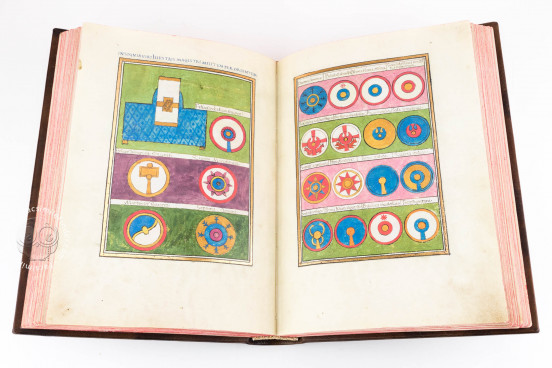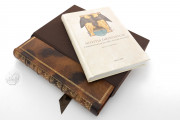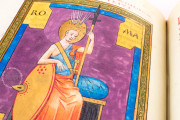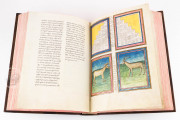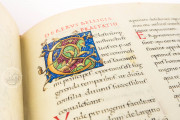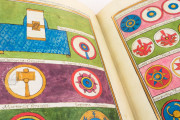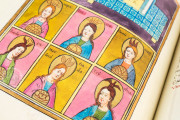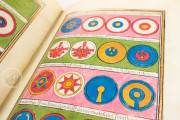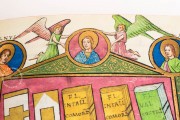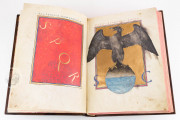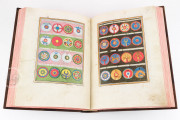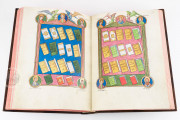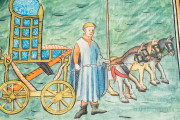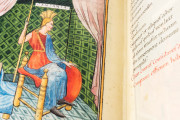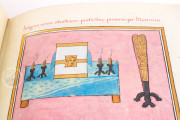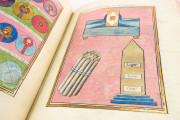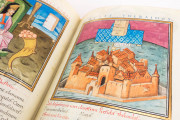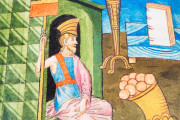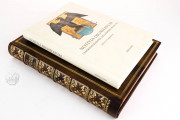The Oxford Notitia Dignitatum is an illuminated compendium of texts on the geography and administration of the late Roman Empire. It was copied for the humanist Pietro Donato, Bishop of Padua, in Basel when he presided over a church council there in 1436. Most of the manuscript's texts and the 107 miniatures that illustrate them ultimately rely on models from late antiquity. The paintings—by the French illuminator Peronet Lamy—thereby offer glimpses into a remote past of intense interest to scholars of the fifteenth century.
The Notitia dignitatum ("List of Offices") proper dominates the Oxford manuscript (fols. 62v-66r, 80v-87r, and 88v-170r), and the lion's share of the miniatures illustrate this detailed description of thousands of offices at the Roman imperial court and in provincial governments, diplomatic missions, and army units.
Insignia and Personifications
Most of the miniatures record the insignia—badges of authority—of the various offices outlined in the Notitia. These often take the form of roundels grouped in full-page miniatures, with each roundel displaying a distinctive geometric pattern in particular colors and sometimes incorporating animal or human motifs.
The miniatures may refer to aspects of the officers' responsibilities. Sacks, dishes, and chests filled with gold and silver coins are pictured for the administrators of donations, East and West (fol. 97v and 142v). The miniatures for the librarians ("masters of the cabinets") depict codices, rolls, and wax tablets (fols. 108v and 146v).
Geographic areas are generally personified as crowned women holding an appropriate object: the personification of Africa holds sheaves of wheat as she oversees ships laden with sacks of grain (fol. 147r). Lamy occasionally converted a personification into a bearded man, as in his representation of Palestine (fol. 128v).
Machines of War
A text devoted to war (fols. 67-77) boasts twelve miniatures, ten of which depict weapons and machinery of war, including a chariot with side-mounted scythes (fol.73r), an ox-powered paddlewheel battleship (fol. 75v), and a missile launcher called the "lightning bolt" (fol. 76r).
A Copy of a Copy of a Copy
The Oxford manuscript's texts and illustrations are, with a few exceptions, copied from a tenth-century manuscript known to scholars as the Codex Spirensis ("Speyer Codex"), which was borrowed from the cathedral at Speyer to make Donato's copy. That manuscript—of which only a fragment survives—was, in turn, a copy of a ninth-century manuscript that was a copy after a late antique original.
An anonymous Italian scribe wrote the text of Donato's manuscript in Humanistic Minuscule. Generous and elegant use is made of a display script of capital letters for chapter titles. The two painted initials (fols. 3r and 67r) are Italian in style and presumably the work of an Italian artist.
Artistic Departures
Lamy generally imitates his models in the Speyer manuscript closely, but he also created some imagery for the Oxford manuscript not found in the Speyer Codex (probably at Donato's request). Lamy's miniature that opens a description of the city of Constantinople, for example, is a charming cityscape featuring monuments constructed centuries after the ancient text was composed (fol. 84r). The manuscript's frontispieces are entirely of Lamy's invention (fols. 1v-2r).
Wonders of the Ancient World
At the end of the manuscript, the humanist and antiquarian Ciriaco d'Ancona (1391-1452) copied the original Greek of a short text by Saint Gregory of Nazianzus on the seven wonders of the ancient world, followed by his own Latin translation (fols. 172v-173r), dedicating the translation to Donato.
From the Canonici Collection
Once in the collection of the Venetian senator and bibliophile Giacomo Soranzo (1686-1761), the book was then in the extensive manuscript collection of Matteo Luigi Canonici (1727–1805), which passed through the hands of his brother and nephew before being purchased by the Bodleian Library in 1817.
We have 1 facsimile edition of the manuscript "Oxford Notitia Dignitatum": Notitia Dignitatum facsimile edition, published by Istituto dell'Enciclopedia Italiana - Treccani, 2014
Request Info / Price
